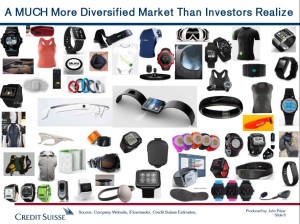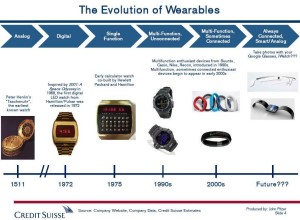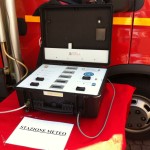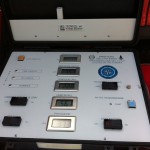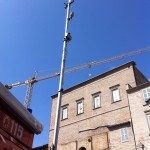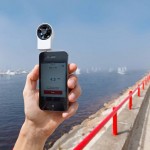Monthly Archives: May 2013
On the e-commerce business
A long and very good post on the e-commerce business by Andy Dunn, E-Commerce is a Bear.
In short:
If you’re selling other people’s brands, you are competing not via a local group of competitors but with everyone. In this type of market, you might imagine having one large national winner. You might imagine that winner is ruthless about scale and cost. This leader is Amazon. For everyone else, the answer is you don’t compete with Amazon in the low-cost selling of third-party brands, because you can’t.
Strategies to deal with Amazon:
- Proprietary Pricing. By temporally offering exclusive access to a better price, an e-commerce player can grow extremely quickly.
- Proprietary Selection. Proprietary selection is a strategy about being narrow and deep for a particular audience. It’s a cousin of proprietary merchandise because it is all about assortment, though the merchandise in this case is largely third-party brands.
- Proprietary Experience. E-commerce also creates new models that didn’t make sense before. Take a subscription shoe-commerce sites like JustFab and ShoeDazzle.
- Proprietary Merchandise. Proprietary merchandise is when a company builds its own brand with e-commerce as its core channel. By offering goods which are not available anywhere else, customers have to buy them directly from the brand. In this way, you own your own margin and you don’t have to compete with other sites selling your brand.
Crowdsourcing sensor data
Crowdsourcing is, according to the Merriam-Webster Dictionary, the practice of obtaining needed services, ideas, or content by soliciting contributions from a large group of people, and especially from an online community, rather than from traditional employees or suppliers.
There are four billion mobile phones and growing, and when coupled with sensors that collect data, they constitute a power tool to understand trends and predict signals. Data have to be collected and analyzed and it is not a trivial task.
We have platforms such as:
Ginger.io taps into the continuous sensor data from your mobile phone and other devices to predict individual behavior changes and identify aggregate trends. Our research from MIT Media Lab demonstrated that location and communication sensors can be used to model individual symptoms and long term health outcomes. A few articles on Data Science Meets Behavioral Science and crowdsourcing
Then there is SafeCast, a global sensor network for collecting and sharing radiation measurements to empower people with data about their environments. They have created the equipment and platform to handle the task, see bGeigie Nano Geiger Counter Kit.
Xively, formerly known as Cosm, a Platform as a Service that provides everything you need to simplify and acceleratethe creation of compelling connected products and solutions.
By collecting data such as temperature, humidity and barometric pressure your smartphone could help scientists predict your weather. You can also collect wind speed, air pollution, etc. See the :
- The Shaka accessory measures the wind speed, direction, temperature.
- The Smart Citizen Kit: Crowdsourced Environmental Monitoring from Acrobotic
- The Airquality Egg, community-led air quality sensing network that gives people a way to participate in the conversation about air quality.
Wearable technology the next big thing, smartphones are a key part
Credit Suisse semiconductor analysts John Pitzer, Kulbinder Garcha, Christian Buss, and Stephen Ju cited in a report that wearable technology, such as smart watches, and other accessories, is the next big thing.
Wearable tech is already a $3- to $5 billion market today. In the next two to three years, they projected, it could rise to $30- to $50 billion.
The reports highlights that smartphones are combined with wearables and act as the “hub” through which various technologies interconnect.
Furthermore, research firm ON World released new data from its mobile health and wellness sensor reports, which predicts that in 2017, 515 million sensors for wearable, implantable or mobile health and fitness devices will be shipped globally, up from 107 million in 2012.
Source, Business Insider Thanks To Apple And Google, Wearable Technology Is On Track To Become A $50 Billion Market
Barrons Blog AAPL, GOOG, BRCM Tops in Credit Suisse’s ‘Wearables’ Weltanschauung
The smartphone revolution II
A small example on how the smartphone revolution is reshaping the world. Meteo stations used to be big, and stationary.
Now with an external accessory a smartphone can be turned on a portable meteo station. The Shaka accessory measures the wind speed, direction, temperature. With additional sensors such as barometric pressure sensor and a humidity sensor it could basically replace the old meteo stations.
Probably it won’t have the accurate sensors that traditional meteo stations have, but these things improve all the time. The smartphone powered meteo station has the ability to have the location through GPS coordinates, and the possibility to transmit data thanks to the cellular network. And with data collected from different devices (crowdsourcing), your Android Phone Could Help Scientists Predict Your Weather.
The future is here. For a list of smartphone accessories, take a look at the page Mobile and Sensors in this blog.
Life Lessons From Improv
Dick Costolo (Twitter CEO) gave a commencement speech at the University Of Michigan.

